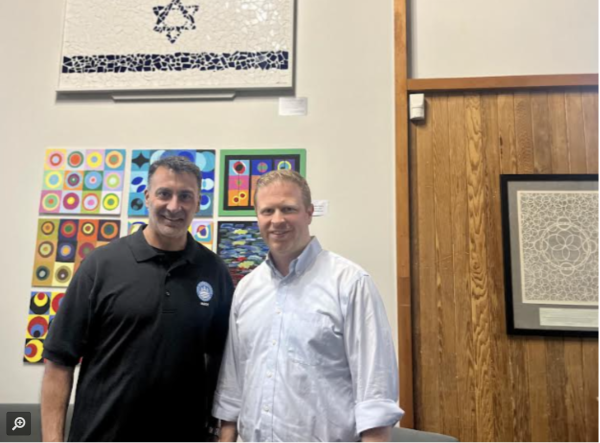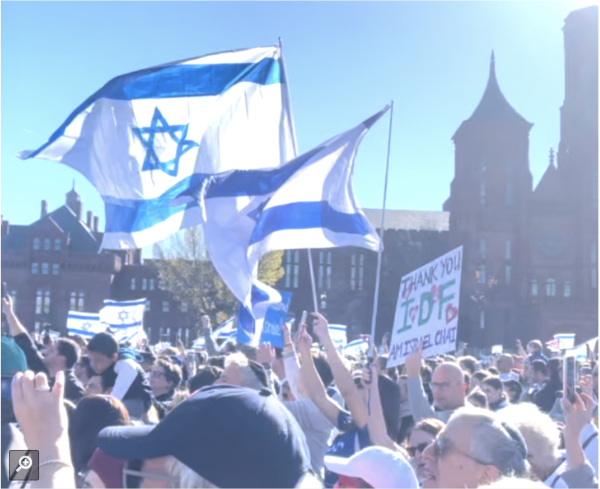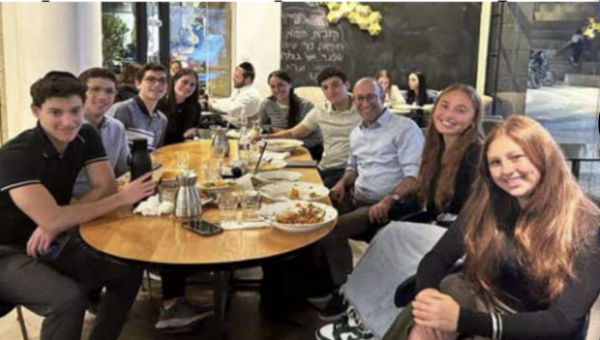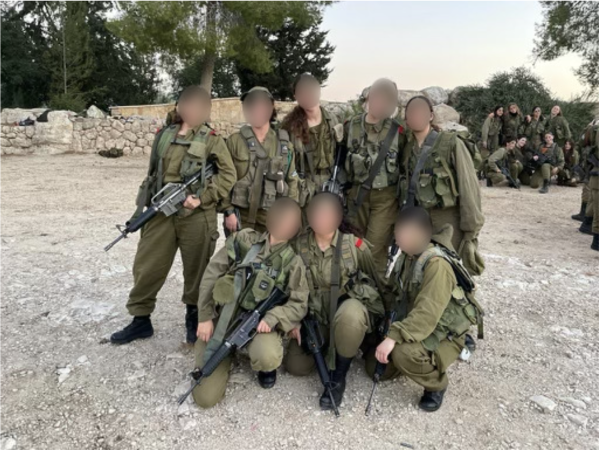A Peek Inside the Closet
Four LGBTQ+ Students Describe Their Experiences
AJA’s LGBTQ+ students have a unique experience shaped by their gender and sexual orientation. This article consists of interviews with four such students. The quotes are unattributed to protect their anonymity. While often not spoken about in a formal setting — apart from the Jewish Queer Youth (JQY) event last year — these students exist. From discussing AJA’s environment towards the LGBTQ+ community, to ways to make AJA more welcoming for LGBTQ+ students, these students had many shared events and feelings that have defined their high school experience.
Within AJA, LGBTQ+ students had rather similar feelings towards the current school atmosphere regarding the LGBTQ+ community. “I feel very lonely,” a student related. “[I] feel like the environment made it like [sexual orientation] had to be a secret, like something that was frowned upon.” A different student agreed, explaining that they feel as though they are “hiding in the shadows.” The lack of a welcoming environment makes this student feel “like [administration and teachers] are not actually here for us.”
One student explained that they have never felt “personally victimized” in school, but only because they are not out to many people — implying that if more people knew, the situation would be different, possibly more negative.
These students do not feel that AJA would be a safe place if more people knew they identified as part of the LGBTQ+ community. Whether for fear of bullying, discrimination, or no place to turn to, their high school experiences are characterized by the fact that, within the school environment, they feel uncomfortable being who they truly are. None of these students are willing to risk finding out whether or not the school environment would actually be accepting. Understandably, no one wants to throw themselves into the water without knowing if someone will be there to keep them afloat.
Students feel uncomfortable coming out publicly at AJA for a variety of reasons. “Within AJA’s interpretation [of the Torah], I am under the impression that a certain set of beliefs and practices isn’t welcome,” said one student. However, the student does not even know that for certain. “It’s not that I know I wouldn’t be welcome,” they said, “it’s that I have no idea.” And for many, the uncertainty is not worth the freedom of coming out.
“No one wants to throw themselves into the water without knowing if someone will be there to keep them afloat.”
A different student similarly feels that “going to a Jewish school [that] has a [reputation] of not always being the most LGBT- friendly” makes it more difficult to feel accepted, especially when not enough work is being put in to create that acceptance.
“I wish the school had an environment that made it safe to be gay,” a student said. “I feel like if they openly supported it more, I would feel safer coming out here.” Without full and open support, the students feel unsafe opening up, not knowing what the response would be. The LGBTQ+ students feel that the first step cannot come from them because the risk is too high and the outcome is too unknown to make it rational for them to come out.
When it comes to specifically harmful instances at AJA, most students had little to no negative feedback. One student explained that there was “nothing blatant,” only microaggressions such as some students saying “that’s so gay” and “no homo.” Similarly, a different student jokingly said that it was “just little things, like a little sprinkle of homophobia.” The same student described a specific instance in which a friend said that homosexuality is “a struggle from God.” The situation is not ideal, but it does not pose a significant danger to the students.
A different student theorized that “it’s a relatively good thing that our school doesn’t have much of a history of physical bullying,” because if students did choose to come out, “they wouldn’t be physically hurt.” However, they acknowledged that “emotionally, people could be very negatively affected if they were to come out.”
While homophobia is not extremely prevalent at AJA, students have experienced homophobia outside of school, yet still within the Jewish community. One student explained that since they are not out to anyone, no one has directed homophobia towards them; however, they grew up hearing “being gay is a sin” and that gay people are going to hell.
A different student explained that they perceive how Modern Orthodoxy pretends to be “neutral” on the LGBTQ+ community, “but it still feels negative.” The same student explained that they feel there is a strong emphasis on “love and respect everyone,” but then the actions of individuals — such as teachers — regarding the LGBTQ+ community will, for example, promote heteronormativity in a way that shows how the reality of the situation is less than loving and respectful. Neutrality on this topic has not led to positivity; it has fostered a negative and uninviting environment.
A student lamented, “There are certain things the Torah and Gemara say that are undeniably homophobic, like [being] against gay marriages… How am I supposed to argue with that?” They felt that even if people say they are welcoming, because of their connection to Judaism, cognitive dissonance would “bubble up in other ways.” They elaborated, saying, “People want to maintain the roots of Judaism. It happens to be that those roots aren’t inclusive [to LGBTQ+ people].”
Although not all sunshine and rainbows, students did acknowledge that the school has made progress in accepting the LGBTQ+ community. Last school year, JQY — an organization dedicated to supporting Jewish LGBTQ+ youth — led a workshop about sensitivity training, anti-bullying, and general information about the LGBTQ+ community for high school students. Thinking back to the JQY event, a student noted, “I think one of the most important aspects of inclusion is education, awareness.” However, while the content was informative, the student expressed that they felt that the conversation was being conducted “as if no one sitting in that room [had] ever experienced some of the things they were talking about.” The student felt as if the conversation was being held in the abstract — as something that could happen — rather than as a discussion on topics that students undergo. This student felt that AJA, rather than simply educating, should have also put emphasis on inclusion. While the JQY sessions touched on inclusion and combating homophobia and transphobia, the student felt that the inclusivity aspect left more to be desired.
To help improve the attitudes surrounding LGBTQ+ issues at school, the students had many ideas. The JQY event affirmed that LGBTQ+ students exist, a student recalls. However, “[JQY] wasn’t saying ‘we support you.’ They’ve been so careful to avoid it. Just say yes or no. And that’s that.” A different student agreed, explaining that “they’re very very careful to avoid explicitly saying we support that community.” After JQY, there was no follow-up from the school. A one-and-done program did not affirm support for the LGBTQ+ community nor for LGBTQ+ students. The students believe that requires commitment and effort.
Not only that, but one student emphatically said, “They should accept that this community exists.” Having LGBTQ+ students is not theoretical; there are LGBTQ+ students at AJA. As a student explained, “Even if the school doesn’t know specific people, or no one [has] come up and outwardly said, ‘Hello, this is my identity,’ they should assume that these people exist.” These students feel that claiming to be an open environment without putting in the work does not make it inclusive; “it’s not a welcoming environment unless you make it,” a student shares.
“Neutrality on this topic has not led to positivity; it has fostered a negative and uninviting environment. ”
This year, to help create a better environment, two rising seniors, Ella Goldstein and Sivan Livnat (the author of this article) decided to take the initiative and ask the head of school to create an LGBTQ+ Alliance Club. The goals of this club would be to create a safe space for LGBTQ+ students, further educate the school community about homophobia and transphobia, facilitate conversations about LGBTQ+ topics, and debunk the default of cisgender-heteronormativity. Though informal conversations have been happening among students, the students would like for the proposed club to start meeting next school year. The club will hopefully begin the process of creating a more accepting and inclusive environment for LGBTQ+ students.
The LGBTQ+ students feel that the school cannot be complacent in this issue. Just because we had a single JQY event does not mean the work is done, a student explains. “Let’s continue the conversation because the problems will continue to come up,” the same student says, “and we’ll still be here.”
Originally published Aug. 11, 2021 in Palette.
This story won First Place in the 2022 Jewish Scholastic Journalism Awards in the category “Feature reporting on Jewish communities, religion, education, institutions, activism, culture, leaders or personalities.”
JSPA Judges’ Comments: Very sensitive treatment of a delicate subject in the Modern Orthodox context, including multiple unnamed voices talking frankly about their experiences at school and in the community. A thorough and important piece.










